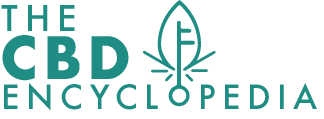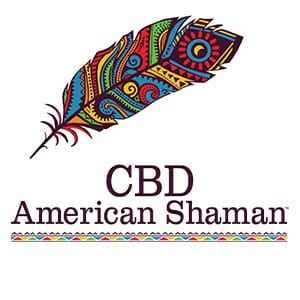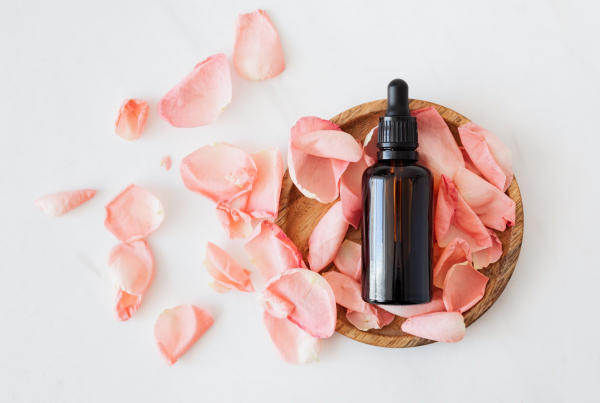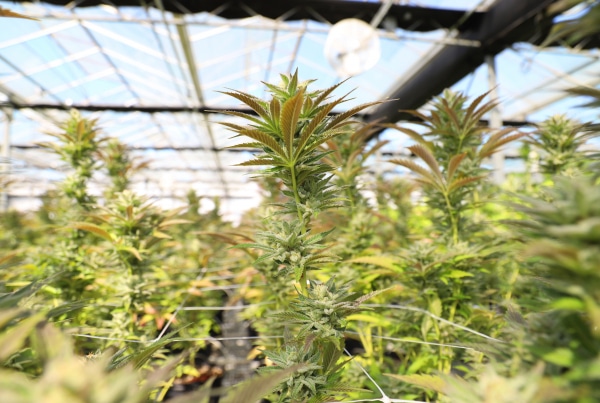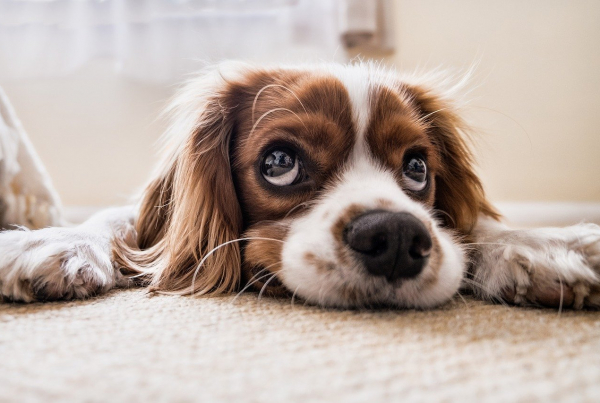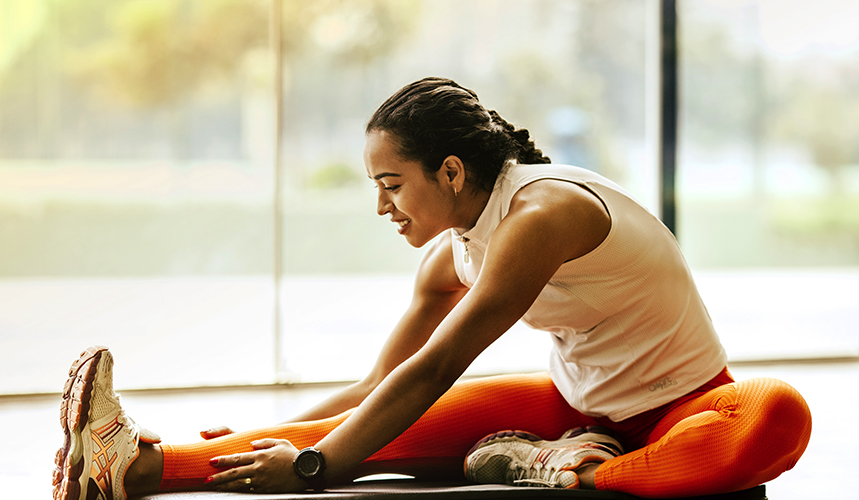
The idea of a pre-workout routine is commonplace in the world of athletics. Maybe you pound a protein shake, visualize your run, or go through your favorite warm up. However, for many athletes, cannabis consumption is an essential component of their pre-workout routine and they consistently travel with a stash.
In addition to the mental piece, cannabis also induces physical effects that can enhance athletic performance–or at least make it more pleasurable. You’re probably wondering, how can cannabis possibly be considered a ‘performance enhancing drug’? Cannabis provides many benefits that athletes are able to harness before, during, and after activity. This guide will help you understand how cannabis aids in athletic performance and how to leverage these benefits in your own athletic endeavors.
Benefits Of CBD And Other Cannabinoids For Athletes
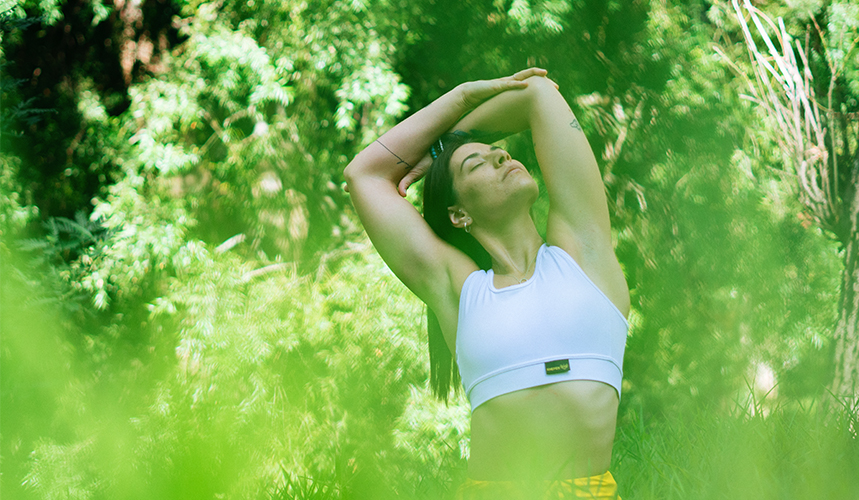
If you are an athlete or someone involved in sports, you are likely familiar with the feeling of exhaustion from game day or a tough workout. You may also be familiar with feelings of nausea or fatigue from dehydration.
These factors are just a few concerns for athletes that you might have experienced at certain points in your athletic career. Athletes are starting to look towards cannabis products as an all-natural alternative to help aid in conditions such as muscle fatigue, inflammation and pain relief.
Anti-Inflammatory Properties
Both CBD and THC are extremely effective in managing inflammation post exercise. Cannabinoids are potent anti-inflammatory agents and they exert their effects through induction of apoptosis, inhibition of cell proliferation, suppression of cytokine production and induction of T-regulatory cells (Tregs).
Inflammation is a common condition most athletes will experience. CBD products have been proven through scientific studies to decrease inflammation.
CBD can help fight inflammation that often leads to muscle soreness and higher levels of stress within the body. Studies have also shown that CBD can help in conditions like psoriasis, lupus and Crohn’s disease.
Whether you’re an athlete who suffers from muscle and connective tissue pain or someone who is recovering from a past surgery or injury, CBD may be a great alternative to you. CBD has also been shown to help speed the healing process or looking for an alternative medicine solution.
The options are endless when it comes to choosing a CBD product to reduce inflammation. While vaping and flower are great for instant relief, topical products and tinctures are great for localized treatment and prolonged relief. One of our favorite topicals to use for muscle soreness is SeaBeDee’s Muscle & Joint Relief Cream.
Sleep and Relaxation
Cannabinoids are known to have both relaxing and sedative effects on users. In fact, cannabis with concentrations of CBN approaching 1% by weight can be useful in treating insomnia. Getting the required sleep each night is perhaps the most important aspect of being a healthy athlete – muscles grow and recover best during deep sleep.
Sleep allows for muscle recovery, especially after a busy day and a strenuous routine in the evening. However, soreness and continuous inflammation can disrupt your sleep. Finding a way to keep the pain at bay will assure better sleep.
Studies indicate that CBD can induce sleep and help retain all the sleep stages before an individual awakes. These studies suggest an improvement in the sleeping patterns for 67% of the participants. Cannabidiol helps soothe the soreness by fighting the inflammation and reducing the pain.
The relaxation and calm environment CBD induces pulls you to sleep within a short while. The muscles have a chance to fully recover as CBD promotes better healing and recovery. It prepares your muscles to take what the next day has to offer.
Athletes often suffer from insomnia and lack of sleep due to aching muscles, long hours of practice and exhausting workout routines. If you are an athlete looking to improve sleep, your solution might be as simple as incorporating a daily CBD product into your routine.
One of the main cannabinoids, THC, is known for inducing sleep while also aiding people with sleep apnea. THC can even help those suffering from post-traumatic stress disorder (PTSD) by suppressing dreams. On the other hand, CBD, the other main active ingredient in cannabis, can aid in easing daytime fatigue and REM sleep disorder.
CBD has been shown to improve sleep quality and duration while reducing the effects of fatigue. Overall, having deeper sleep and waking up with refreshed energy will have a dramatic impact on your overall performance.
From a medical perspective, CBN is considered to be the strongest sedative of the known cannabinoids. Its sedative effects are so powerful that cannabis with concentrations of CBN approaching 1% by weight can be useful in treating insomnia. According to Steep Hill Labs, 2.5-5mg of CBN is as effective as 5-10mg dose of diazepam. For sleep inducement, CBN is synergistic with CBD and THC in the correct ratios.
If you are looking for an alternative to conventional sleep medications that can otherwise be habit-forming, you might want to consider looking into cannabis products as an alternative to pharmaceuticals.
Decreasing Nausea
Cannabis has anti-emetic effects, helping athletes reduce nausea during and after exercise. In fact, many studies have shown that for treating nausea and vomiting, cannabinoids are more effective than older medications such as phenothiazines (e.g., Stemetil®) or antihistaminics (e.g., Dramamine®).
Reduction of Muscle Spasms
Cannabinoids such as are known to have antispasmodic properties. Some causes of muscle spasms in athletes include straining of a muscle, dehydration, trauma, and damage to nerves or to the spinal cord. THCa, THC, CBC, CBD, and CBN are all recognized for their antispasmodic effect.
Muscle Recovery
Post-training, athletes will likely experience muscle fatigue, pain, stiffness and other symptoms.
For athletes who want to improve performance and quickly heal after long hours can benefit with the inclusion of cannabis for muscle recovery.
Recent initial findings from research and studies find that cannabis can help in countering delayed onset muscle soreness otherwise known as DOMS. (Gillman et al, Cannabis and Exercise Science, 2015)
CBD-rich strains have analgesic and anti-inflammatory properties to counter muscle soreness and aid in faster workout recovery.
Try topical solutions and salves containing high concentrations of CBD to aid in muscle pain and speed in the recovery process.
Our favorite topical for easing muscle soreness is SeaBeDee’s Muscle & Joint Relief Cream and VitaHempOil’s CBD Muscle Gel coming in at a close second.
Athletes and anyone with an active lifestyle face many challenges while carrying out their day to day routines. Some encounter bouts of anxiety from high stress which can affect their performance levels. The stress associated with the daily routines and the pressure to perform well can also cause a lot of damage to self-esteem and confidence levels.
Supplementing with CBD oil can change this discomfort associated with general anxiety. Studies show that CBD can even protect the brain, preventing further damage. These neuroprotective capabilities provide relief from associated anxieties and enhance the cognitive functions of an individual.
THC is reported to contribute to an anti-depressant like effect as well when combined with CBD and CBG in a full spectrum entourage effect.
Increasing Appetite + Digestion
Cannabis is a safe way to stimulate appetite. Powerlifters, MMA fighters, and other athletes with demanding eating regimens often find that cannabis encourages them to take in more calories than they might have otherwise. Cannabis increases the levels of two key hunger-regulating hormones, ghrelin and leptin, without significantly altering insulin levels.
One of the main concerns of athletes is obtaining a well-balanced diet, optimal digestion and proper nutrition to feed muscles. One problem that athletes often run into is not eating enough calories to supplement their active lifestyle.
Cannabis is a safe and effective way to stimulate appetite. Powerlifters, MMA fighters, and other athletes with demanding eating regimens often find that cannabis encourages them to take in more calories for sustained energy. Studies show that cannabis can help in improving the appetite by increasing levels of ghrelin and leptin, two hunger-regulating hormones.
CBD can also help with digestion issues such as constipation, indigestion, and internal inflammation.
THC isn’t the only compound that allows people to use cannabis for appetite stimulation. Researchers have also discovered that another cannabinoid – cannabigerol (CBG) – can help to bring on the munchies.
Studies have shown that CBG can fool one’s brain into thinking that the body is hungry. Like THC, CBG has been shown to boost one’s appetite, though unlike THC, it is non-psychoactive.
So far, CBG has been credited with stimulating appetites in addition to being non-psychoactive. Additionally, research has shown CBG as helpful in reducing inflammation and inhibiting the growth of bacteria or the replication of tumorous cells, according to research published June 2017.
Protection of Heart, Lung, and Brain
In several studies, CBD has been shown to decrease inflammation while offering protection for the heart, lungs, and brain during and after injury. In fact, the short-term neuroprotective effects of CBD in the brain continue to be researched for purposes of treating sports concussions.
Aids in Concussions and Brain Injuries
If you have ever been an athlete or have known someone who has played sports you may be familiar with concussions. Recent research has been focusing on the impact of sports on brain injuries.
Researchers are particularly interested in the effects of CBD in the area of brain injuries, and many studies show a clear connection between CBD and the brain, with most of the emphasis on the neuroprotective properties of cannabidiol.
Further research suggests that cannabidiol may be effective in reversing some types of brain injuries, or preventing further damage from severe brain injuries as they heal.
Increased Pain Tolerance
Cannabis is an analgesic, helping to alleviate pain both during and after exercise. Some athletes are actually able to increase their pain threshold by using cannabis prior to exercising. Andrea Giuffrida, an associate professor at the University of Texas Health Science Center, explains “the endocannabinoid system works like endorphins” – aerobic exercise actually activates the endocannabinoid system in the same way that the cannabis plant does. Thus, endocannabinoids (produced naturally in the body without aid from cannabis), which regulate pain, mood, and memory, can actually help you push through an intense workout similar to the effect of endorphins.
Preliminary studies suggest THCa has strong anti-inflammatory properties and is especially helpful in managing the severe pain caused by inflammation in Lupus and arthritis patients. Other medical benefits of THCa include neuroprotective, antiemetic (anti-vomiting), and anti-proliferative properties.
Cannabis is an analgesic, helping to alleviate pain both during and after exercise. Many athletes, like Olympian Ross Rebagliati, use cannabis following their workouts to continue managing pain from achy muscles.
A strenuous workout can also result in micro-tears of your muscles. These tears cause immense inflammation, which can cause pain within the body. A workout is a significant reason for your soreness and the lingering injuries that never cease. The continuous pain you feel in the joints results from inadequate rest and no time to allow complete recovery.
Studies confirm CBD’s role in reducing inflammation. CBD showed prospects that with the supplement of this plant into their routine it prevented further pain development. As a result, it ensured that no more nerve damage was occurring, protecting from arthritis, especially in the joints.
Creativity
Cannabis is believed to stimulate creativity by allowing the brain to connect seemingly unrelated concepts. This allows athletes like skiers, surfers, and mountain bikers to pick more creative lines and make connections they otherwise may not have made. Many athletes self-report an increased sense of fluidness or float when using cannabis with sport.
Improving Mood
Cannabis is a mood enhancer, helping athletes enjoy and focus on repetitive athletic tasks like running long distances or enduring a grueling training session.
Improves overall performance
Personal performance is easily affected by the smallest elements in a person’s workout routine. If muscles are too sore, then performance is likely lower than normal.
CBD helps in reducing muscle inflammation, which enhances endurance levels. With the added relief and quicker recovery time you can continue strenuous activities. CBD can also aid in sleepwhich couples well with CBD for improved muscle regeneration.
Flow State And Cannabis
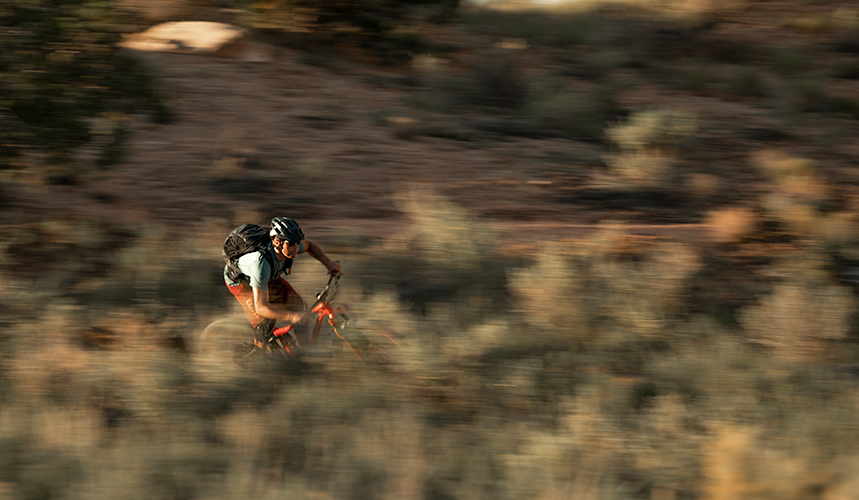
Have you ever felt ‘in the zone’? That beautiful balance of exhilarating slow motion when you can anticipate your next move with ease and precision – your execution becomes subconscious excellence. In essence, you are fully absorbed in the activity at hand.
The experience of flow is typically characterized by feelings of spontaneous joy and rapture, despite a deep focus on nothing but the activity – not even oneself or one’s emotions. This is the same sensation artists, athletes, performers, and professionals have when they ‘get lost in their work’, disregarding the need for food, water and sleep.
In the field of psychology, this is known as flow, the mental state of operation in which a person performing an activity is fully immersed in a feeling of energized focus, full involvement, and enjoyment in the process of the activity. Mihaly Csikszentmihalyi, a Claremont Graduate University psychologist, coined the term ‘flow’, although the phenomenon has existed for thousands of years under other guises. According to Csikszentmihalyi, flow is completely focused motivation. It involves full mental immersion and keeping emotions positive, energized, and aligned with the task at hand.
Conditions for Flow State
With the exception of basic bodily functions like hunger and pain, people are able to decide what they want to focus their attention on. However, when one is in the flow state, they are fully immersed in the activity, and without making the conscious decision to do so, lose awareness of all other things. Because all of the attention of the person in the flow state is focused on the immediate task; there is no more attention to be allocated to things like time, people, distractions, and bodily functions.
The flow state can be entered while partaking in any activity; however, it is more likely to occur when one is performing an activity for intrinsic purposes. Passive activities like showering and watching TV usually don’t bring out flow experiences, as the individual is not actively engaged. Regardless of the specific activity, three external conditions must be met to engage in a flow state:
- Clear goals. Adding direction and structure to the task creates purpose.
- Unambiguous feedback. You’re immediately capable of negotiating new demands and adjusting your performance to maintain the state of flow.
- Success potential. A balance between the perceived challenges of the activity and your perceived ability to perform favorably.
Components of Flow
Jeanne Nakamura and Csíkszentmihályi have identified six factors that encompass an experience of flow. While these aspects can appear independently of each other, only in combination do they constitute the flow experience.
- The merging of action and awareness, as participation in the activity becomes both automatic and spontaneous
- You’re focused only on you, creating loss of reflective self-consciousness
- Intense and focused concentration on the present moment
- With practice you develop sense of control over the activity
- Slow mo vision has set in, your experience of time is altered
- You intrinsically enjoy the experience, also referred to as autotelic experience
Components of Cannabis
Many athletes have pre-competition routines designed to increase focus and motivation. Some utilize meditation techniques while others choose less traditional avenues like consuming cannabis. You may be wondering how cannabis could possibly help an elite athlete competing on an international scale, but the parallels between cannabis and flow are more than just a coincidence. Cannabis induces a number of effects in users; those that pertain to flow are as follows (corresponds to numbers 1-6 above):
- Cannabis merges the mind and body by stimulating spirituality and a diminished sense of self
- Alleviates stress and anxiety, providing a relaxed mental state
- Sativa induces feelings of focus and increased energy levels
- Cannabinoids have been shown to regulate neuroplasticity, the structural changes and new connections made between neurons when learning and mastering a specialized skill
- Users self-report the experience of a slowed perception of time
- Inherently induces feelings of euphoria during favorable activities
Individual Response to Cannabis and Flow State
But if athletics activities present the perfect opportunity to enter the state of flow, why is it so difficult to elicit on command? The short answer; the conditions of the activity or the mental requirements of the participant are not met. The goal is to pick an activity that you are competent in and passionate about, and then to use cannabis as a tool to induce the ideal mindset.
Cannabis, like your diet and overall nutrition, can both enhance and impair one’s performance as it pertains to athletics. The challenge when incorporating cannabis in an athletic regimen is selecting the correct strain, dosage, and delivery method.
We can help you learn more about how to use cannabis when exercising and how to use cannabis for recovery. Furthermore, you can explore our dosage guide, and the guide to unlocking your full athletic potential through cannabis with Olympian Ross Rebagliati.
Elite Athletes That Use Cannabis
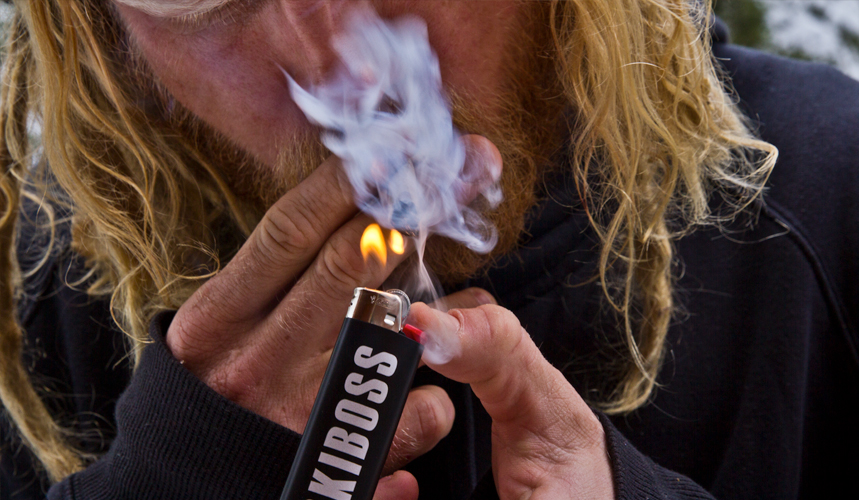
You may not be aware (as many athletes must hide their usage), but cannabis use among elite athletes is very prevalent. Athletics inherently create the conditions required to elicit a state of flow. Thus it is not surprising that so many athletes have experienced the state a flow when training or competing.
Many elite athletes train under the influence of cannabis and consider it a crucial part of their fitness routine. While THC has some very beneficial properties that can help maximize your workout, it’s not the only cannabinoid that can give you the boost you’re looking for. CBD is available to buy online legally in all 50 states and can provide many of the same benefits as THC, but without the psychoactive effects that deter some would-be consumers.
Within the context of sports, Roy Palmer suggests that ‘being in the zone’ may actually influence movement patterns as better integration of the conscious and subconscious reflex functions improves coordination. It is not uncommon for athletes to describe their performance while achieving personal bests as effortless and natural.
Here are some statistics for you:
- Olympic Gold Medalist Ross Rebagliati won the giant slalom event at the 1998 Nagano games with THC in his blood
- Tanner Hall, freeskiing pioneer and 7-time X-Games Gold Medalist has incorporated cannabis into his skiing and recovery regimens, becoming the first professional athlete with a cannabis pro model sponsorship
- Former NFL lineman Lomas Brown said that at least 50 percent of the league’s players smoke cannabis
- Former NBA guard Robert Pack once put the association’s cannabis usage rate at 70 percent
- Elite triathlete Clifford Drusinsky (39 years old) took the podium for his age group in nine major triathlons in 2013 while using cannabis to train and compete
- Former Denver Broncos tight end Nate Jackson used marijuana during his six seasons in the NFL to deal with pain
- International cricket star Sir Ian Botham used cannabis regularly during his career
- Pro wrestler Rob Van Dam has publicly stated that he personally knows “boxers, bodybuilders, cyclists, runners and athletes from all walks of life that train and compete with the assistance of marijuana”
- Pro Skateboarder Bob Burnquist has publicly stated that he’s learned “a lot of tricks while stoned.”
Pre + Post Workout Benefits Of CBD
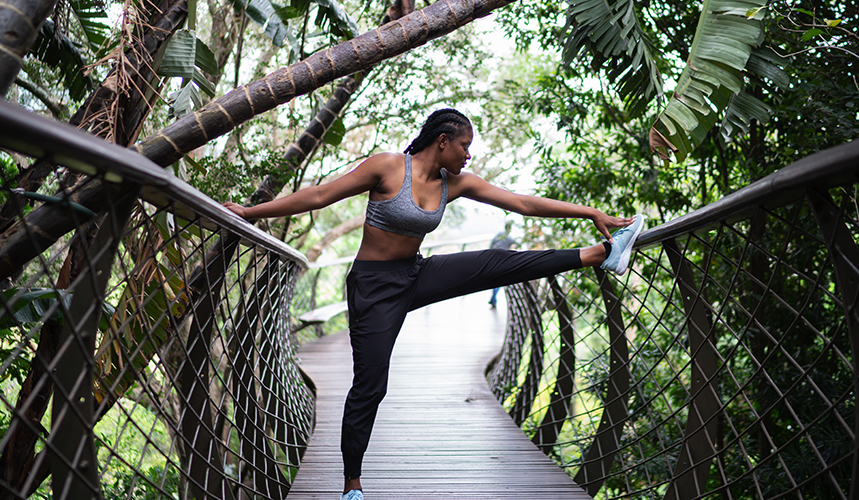
While using cannabis as a pre-workout supplement may sound crazy, it is not uncommon for elite athletes to use cannabis as both a preparation and a recovery tool as well. After an intense workout or training session, you may be tired, sore, or even nauseous. Many people in this situation may toss back two or three Ibuprofen, crack a beer to take the edge off and call it good.
However, what you may not realize is that NSAID drugs like Ibuprofen and Aleve can be extremely dangerous, especially when used with regularity. If deaths from the toxic effects of NSAID drugs were tabulated separately, these drug toxicities would constitute the 15th most common cause of death in the United States.
Therefore, we suggest athletes stick to a more powerful, less toxic, and naturally occurring cannabinoid like CBD. In this guide, we will help you understand the benefits of CBD as a recovery tool and how to garner these benefits in your own post-workout regimen.
Now you might be thinking “I just had a great workout, my head is clear, the last thing I want to do is get ‘high’.” You don’t have to – you can reap the therapeutic benefits of cannabis with no psychoactivity. How is this possible? Simply put, the beauty of CBD.
CBD as a Pre-Workout Supplement
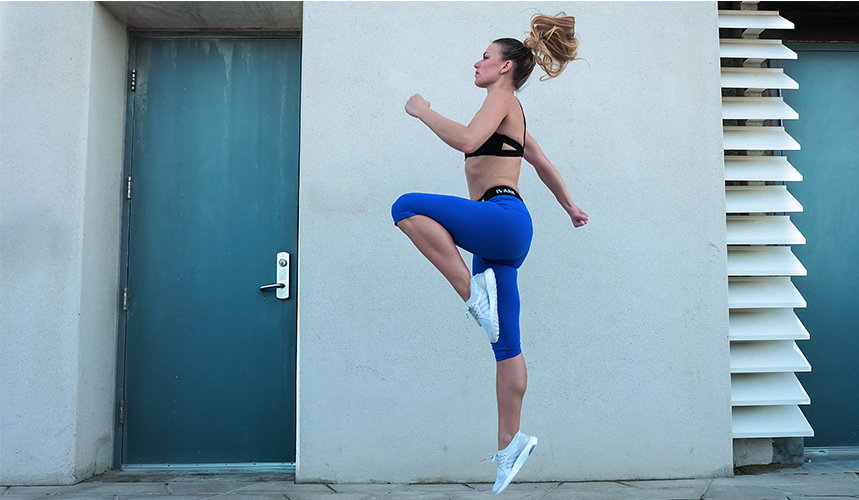
If you’re a fitness devotee, you’re likely familiar with pre-workout supplements, often marketed towards people looking for a boost of energy before they hit the gym. The problem with these products is they’re often laden with caffeine and other stimulants, as well as synthetic ingredients whose effects are poorly understood. All that caffeine can cause a crash (the last thing you need when you’re trying to push your limits at the gym or on the track), and those additives can cause undesirable side-effects. Wouldn’t it be nice if you could get the mood-boosting effects of pre-workout without the added stimulants?
There are a number of ways to consume CBD as a pre-workout supplement. CBD tinctures can be dropped sublingually (under the tongue) and take effect quickly, but CBD can also be vaporized or dabbed in the form of CBD vape oil or 99% pure isolate, respectively. Inhaled CBD will take effect the quickest, and its effects will last about 3-4 hours, giving you plenty of time for an intense workout. Tinctures take effect within about 15 minutes and are effective for up to 6 hours.
A slower but longer-acting option is also available in the form of CBD softgel capsules. They take around 45 minutes to kick in, but their effects last up to 8 hours, perfect for endurance exercise or a big event such as a marathon or 10K run.
CBD can provide the benefits of a pre-workout supplement without the negative aspects: its anti-inflammatory properties can help prepare your muscles for the intense activity to come, helping you lift that extra 10 lbs or go the literal extra mile on the treadmill. Its mood-elevating properties also help prepare you for a workout by alleviating stress and allowing your mind to relax in preparation for your gym session.
CBD as a Post-Workout Supplement
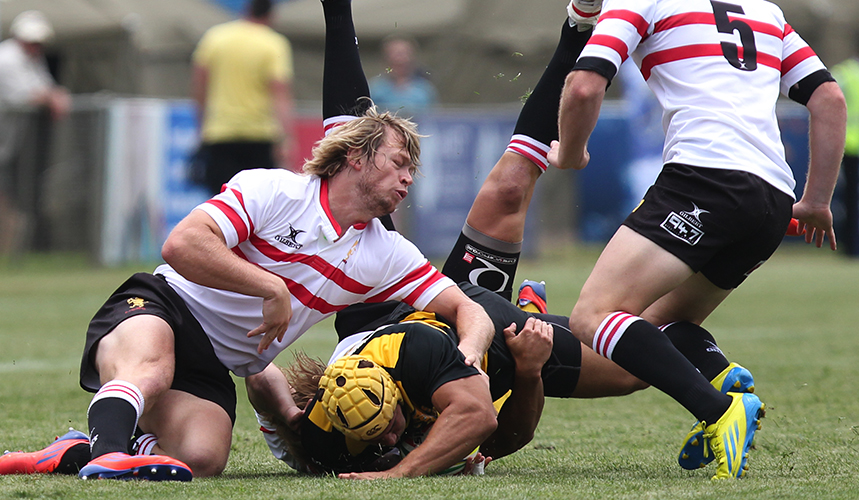
There are a number of ways to take CBD after your workout. If you’re like most of us, you’re looking for fast-acting relief after you leave the gym. This is best accomplished by vaping CBD oil, which is absorbed through the tissue of the lungs and into the bloodstream, so it takes effect in moments. Another option with a similar onset is dabbing CBD isolate. You can also smoke high-CBD flower (go for an indica strain for maximum relaxation and anti-inflammatory benefits) if you desire. Our favorite high-CBD flower is called Lifter from Canna Comforts.
If you prefer not to inhale your CBD, you can also take it orally in the form of tinctures or CBD softgel capsules. These forms take a bit longer to kick in—about 15 minutes for tinctures, and closer to 45 for the softgels—but their effects are strong and long lasting; between 6 and 8 hours.
If you’ve gone really hard at the gym, it may be a good idea to pair a more immediate form, such as vaping, with a longer-lasting form, such as CBD softgels. This will help alleviate the immediate soreness and exhaustion you feel while countering inflammation over a longer period of time, helping you recover faster and feel your strongest more quickly.
If you find yourself in need of localized relief after an injury or strain, a topical CBD salve can work wonders. The CBD in topicals works to combat inflammation at the surface level while your systemic CBD (like softgels or vaping) works from the inside to ease internal inflammation. Use both together for maximum effectiveness, especially if you find yourself injured after an intense training session.
We highly recommend Seabedee’s Muscle and Joint Relief Cream for localized pain relief.
When using cannabis for physical and mental recovery, you will likely be looking for pain relieving, relaxing, anti-inflammatory strains. These properties are found primarily in indica strains and those strains containing high levels of cannabidiol (CBD). Cannabis strains of the indica variety provide athletes a deeply relaxing body high that helps both the mind and the muscles relax, and you can get them without THC.
If you’re looking to avoid feeling ‘high’ or getting stuck on the couch, you should try a non-psychoactive CBD-rich strain. CBD has a wider scope of therapeutic benefits than any other cannabinoid and is effective even in small doses. Thus, it is my recommendation that you choose an indica dominant strain and/or a CBD-rich strain to take advantage of these beneficial post-workout effects.
CBD targets the same inflammation treated by NSAIDs, alleviating it (and the pain it causes) naturally and with no undesirable side effects—your liver will thank you. CBD is also a natural analgesic (or pain-reliever), meaning it has properties that help stop pain in its tracks. This is especially helpful after an intense workout, relieving muscle soreness and reducing underlying inflammation. This reduction of inflammation can help speed muscle recovery in the long term in addition to the short-term relief it provides.
CBD also has anti-emetic properties, meaning it can help with that feeling of nausea that’s common after an especially intense workout session. Its antispasmodic effects can help ease or eliminate muscle cramps and spasms too, staving off that late-night Charlie horse or those irritating leg cramps that can keep you awake.
How To Consume Cannabis Before Exercising
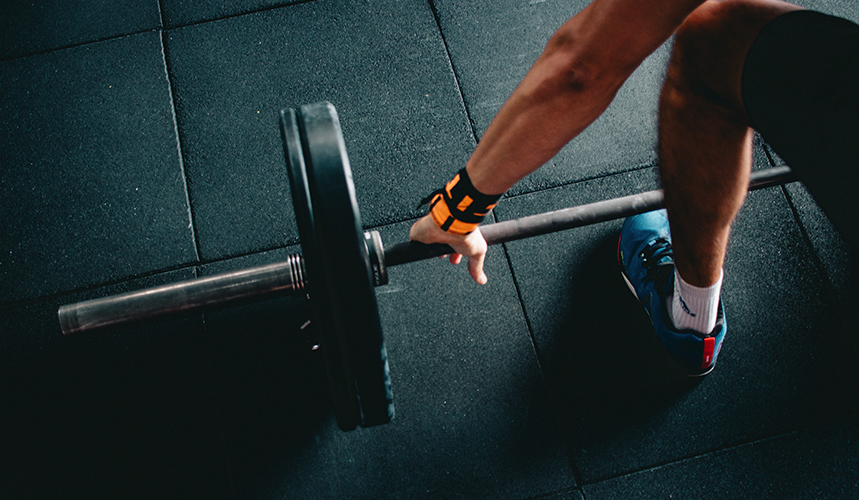
As a general rule of thumb, most athletes will benefit from incorporating a sativa strain into their pre-workout routine, as opposed to an indica strain, which is better suited for recovery. Sativa strains provide increased energy, focus, creativity, and euphoria.
On the other hand, indica strains provide stress and anxiety relief, suppress nausea, and appetite stimulation, which are great choices for your post-workout cannabis therapy.
There are also hybrid strains that take on characteristics of both the indica and sativa species. Because each of us has a unique brain and endocannabinoid system wiring, we all respond to cannabis in a slightly different way. This means that selecting strains is easier said than done, but a quick conversation with your budtender or caregiver should help you find the appropriate sativa for your next workout.
Popular sativa strains often end in ‘haze’ like Super Silver Haze, Super Lemon Haze, Purple Haze, Ghost Train Haze. Other popular sativas are Sour Diesel, Jack Herer, Durban Poison, Acapulco Gold, East Coast Sour Diesel, Strawberry Cough, and Green Crack.
Select Consumption Method
Vaporizers, edibles, tinctures, and topicals are best suited for athletes. Despite its prevalence, smoking cannabis is not actually the preferred consumption method for most athletes. Smoking is simply not as effective at delivering isolated cannabinoids (the therapeutic compounds in cannabis). Remember, the THC in your edibles or vaporizer came from cannabis buds, so make sure the cookie or concentrate is labeled sativa.
Vaporizing
Vaporizing either flower or cannabis concentrates will deliver immediate benefits and the effects will last anywhere from 30-90 minutes. You’ll achieve the same effects if you dab as well. A solventless sativa-hybrid dab before skiing really helps us find the flow.
Edibles
Ingestion of cannabis results in a delayed onset time. Relief likely wont be felt for 30+ minutes; however, the effects will last for 2-4+ hours, which is ideal for endurance activities like running, backpacking, climbing, or swimming.
Tinctures
One of the more discreet options, but a bit more challenging to acquire in non-legal states (although you can make your own). Relief likely won’t be felt for 15+ minutes; however, the effects will last for 1-3+ hours.
Topicals
Perfect for treating muscle, joint, and surface-oriented pain. This type of treatment does not provide the typical THC ‘high’, it is simply localized pain relief similar to Bengay or IcyHot.
We highly recommend Seabedee’s Muscle and Joint Relief Cream and Joy Organics Sports Cream.
Start with a Small Dose
Managing dosage can be the most challenging part of the process. That said, you should try any new cannabis products at home in a comfortable setting to see how your body responds before incorporating them into your exercise routine. Research and anecdotal evidence shows that there is a fine line between enhancing performance and detracting from it.
Dosage in this case refers to managing the amount of THC, the primary psychoactive compound in cannabis (as other beneficial compounds like CBD are non-psychoactive). You will notice that the recommended dosages vary with each consumption method.
Vaporization
Take just a couple slow and steady inhalations; the effects will be felt within minutes. Wait a minimum of 15 minutes before deciding to repeat. You can always bring a portable vaporizer with you for additional dosing. Our favorite vaporizers are from Bloomgroove who have a wide selection of high quality and affordable vapes.
Edibles
For occasional consumers, we recommend 5-10mg of THC. In the state of Colorado, 10mg is considered a single serving size.
Tinctures
2-4 drops of the cannabinoid-rich liquid under the tongue is often a sufficient starting dose. The effects will be felt within roughly 15 minutes.
Topicals
Start with a few sprays or a couple pumps and apply more as desired. Because they are non-psychoactive, you run little risk of overdoing it.
Best Practices For Exercising With Cannabis
Get Outside
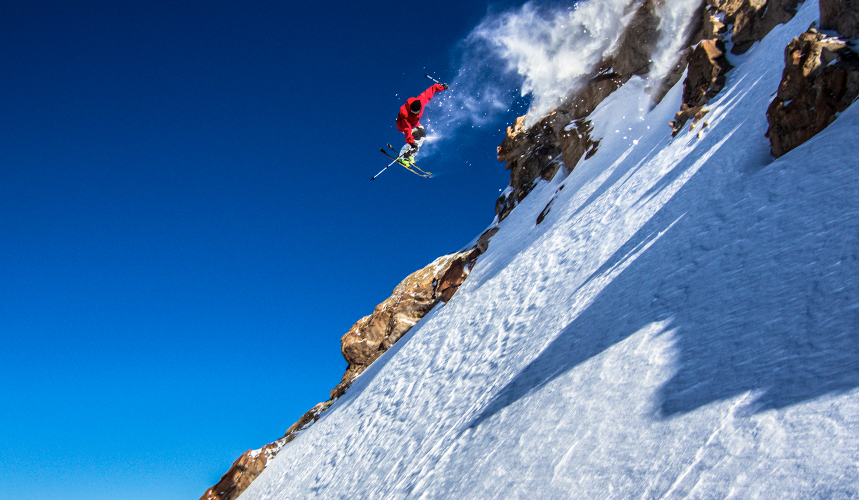
Going to the gym is probably not going to deliver the experience you’re hoping for. The energetic nature of cannabis sativa can sometimes create anxiety, so you don’t want to be on the treadmill or bench press and wondering if everyone knows you’re high. Hit the park, the trail, the beach, the mountain…anywhere with some fresh air and space to connect body and mind.
Choose the Right Activity
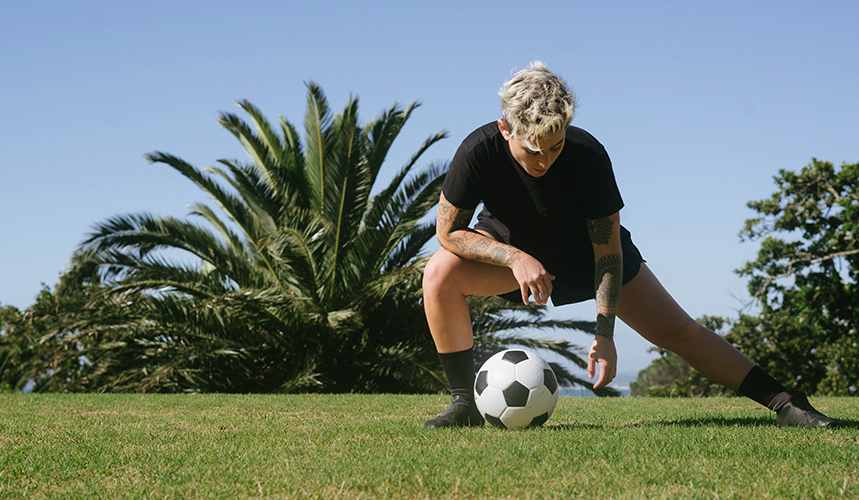
For your first try, it’s important that you pick an activity that you are competent in and passionate about. Consuming cannabis before trying any new sport probably won’t go too well, unless you’re Travis Pastrana. It is also important to set challenging but achievable goals in conjunction with the activity. Practically, this means picking the right ski run or a realistic run time.
Push Yourself
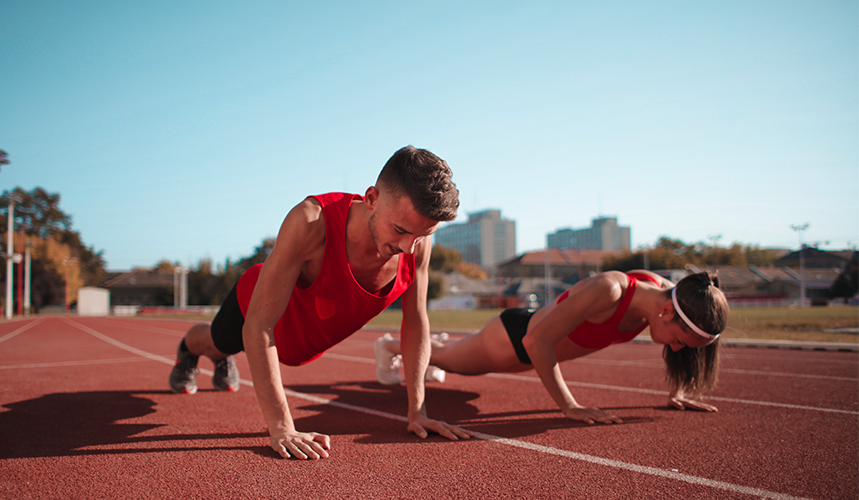
Cannabis is a mood enhancer that increases your pain threshold, which means you won’t hate that grueling hill or that final lap quite as much. As some athletes say, the THC helps you embrace the suffering.
Find Your Zone
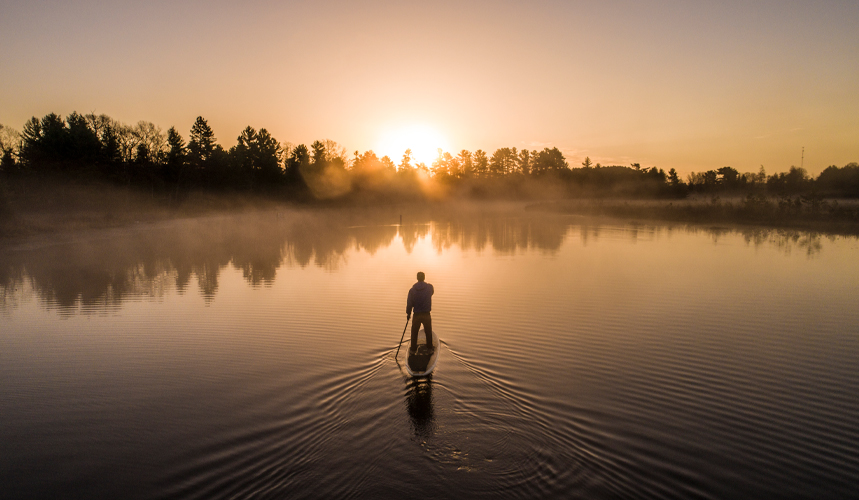
Everyone reacts differently to each type of cannabis, which means some activities and strains are going to pair better than others. For example, someone doing one hour of yoga will want a totally different strain, dosage, and consumption method than a backpacker. To learn more about how choose, check out a few of our favorite cannabis exercise ideas.
Use CBD Liberally

Cannabis is an extremely potent plant from a medical perspective. There are specific strains that are rich in a compound called CBD. Instead of getting you ‘stoned’, CBD works in myriad ways to heal your body.
The Best CBD Products For Athletes
CBD is CBD, right? WRONG. Just like there is good weed and bad weed, there is quality and there is snake oil. Whether you’re an experienced consumer or just learning, selecting the appropriate brand and product is one of the most important, yet often overlooked steps.
Best THC-Free Cream: Joy Organics Sport CBD Cream
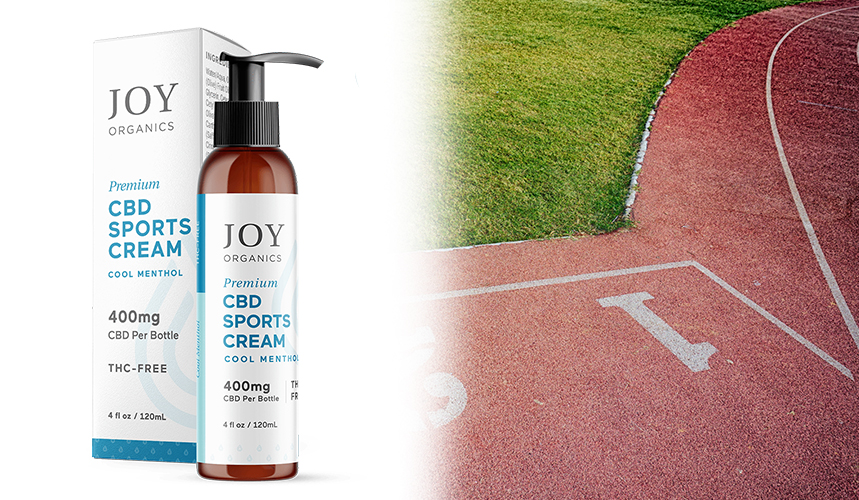
We love this sport cream from Joy Organics to soothe and support healthy muscles. We recommend using the cream at any time- before, during or after your workout. We love this vegan cream that’s packed with 400mg of Premium CBD and enhanced with the benefits of menthol and camphor as topical analgesics to keep you feeling calm and cool when you’re on the move.
Best Full Spectrum Salve: Pure Relief Pain Salve
This multi-purpose salve has a high full spectrum CBD content, 500 mg, and deeply penetrating and nourishing essential oils to enhance the relieving effects of this salve. The primary ingredient is cold pressed hemp oil, but other helpful anti-inflammatories and healthy trace minerals like arnica and magnesium assist the pain-relieving effects of CBD. We love the scent, and the powerful relief this salve provides for aching muscles.
Best Cooling Cream: Aspen Green Cooling Cream
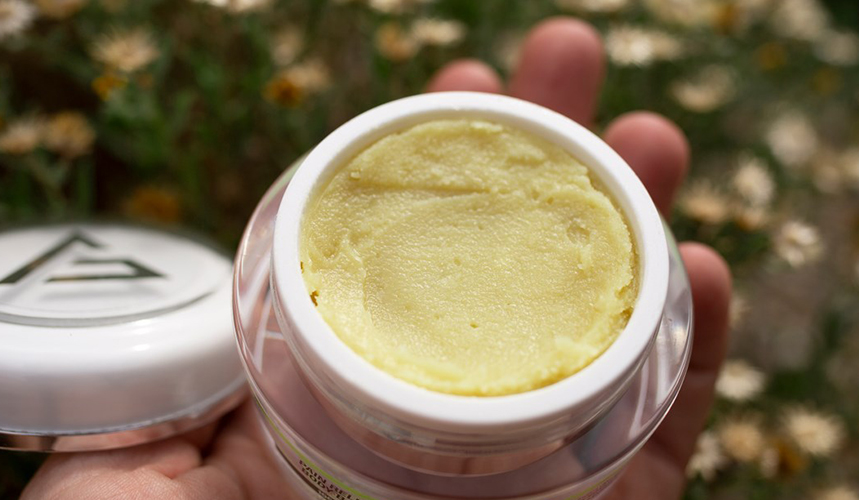
Aspen Green makes an amazing super cooling cream for when you’re feeling burnt out. Their products deliver a full spectrum of phytonutrient-rich whole hemp plant extracts, including pure CBD, without the psychoactive effects of THC. This cream brings in the deeply penetrating and moisturizing oils of Evening Primrose and Jojoba to make a luxuriously calming and gentle massage cream for major tension areas. Because of it’s cooling ingredients like Tea Tree oil and Menthol, be careful to avoid sensitive areas.
Best Menthol-Infused CBD: mintedLeaf Menthol Cream
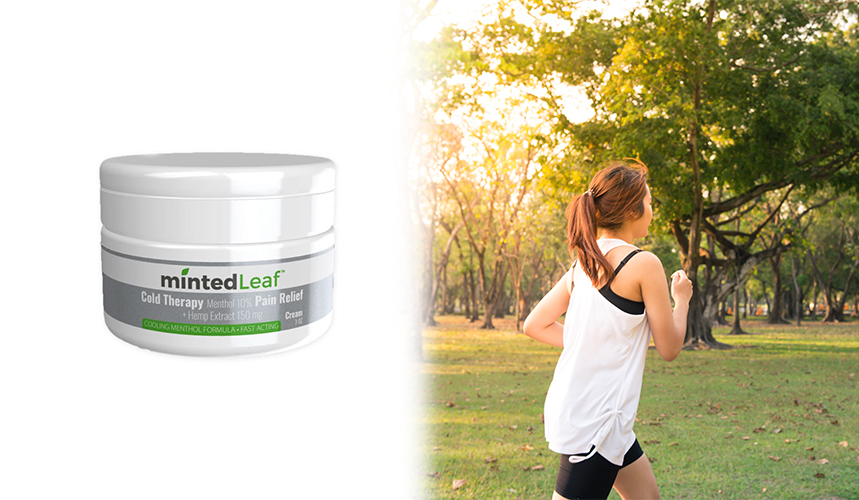
We love this Cold Therapy cream from mintedLeaf for daily pain management. Apply it to temporarily reduce pain associated with sore muscles, sore joints, arthritis, backaches, sprains, strains and bruises. This cream uses the power of 10% menthol for quick relief, as well as 150mg of broad spectrum THC-Free CBD and other moisturizing oils. Keep this menthol cream nearby as a quick fix for pain on the go!
Best CBD for inflammation: cbdMD Recover Inflammation Cream
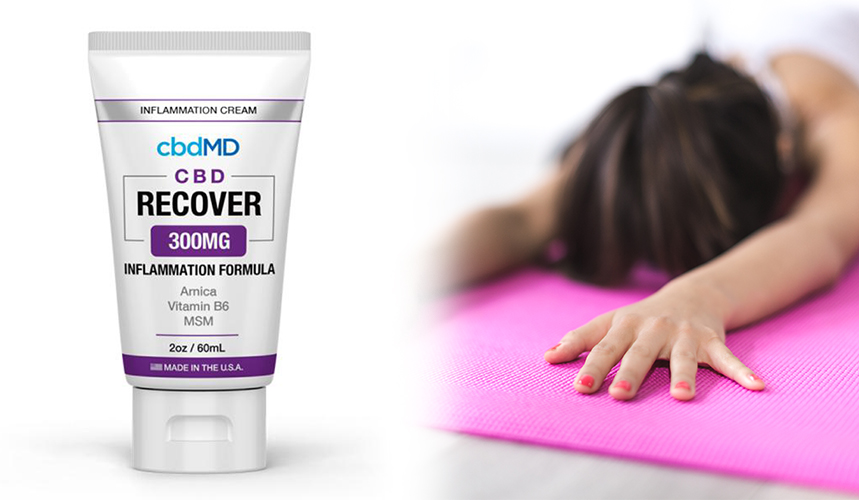
High Quality CBD alone already has great anti-inflammatory effects, but cbdMD goes above and beyond again with their recover cream. Designed specifically for recovery it has an incredible 750mg of THC-free organically farmed hemp as well as Arnica, Vitamin B6, and MSM for a full profile anti-inflammatory and muscle support. With this cream, every ingredient has a special purpose: Arnica enhances white-cell stimulation, Vitamin B6 to repair inflammatory and arthritic damage, and MSM for increased flexibility and absorption within cellular walls. We love this cream to be proactive and bounce back quickly to optimal performance in our workouts.
Best Neck Cream: SERENE CBD Arnica Pain Cream
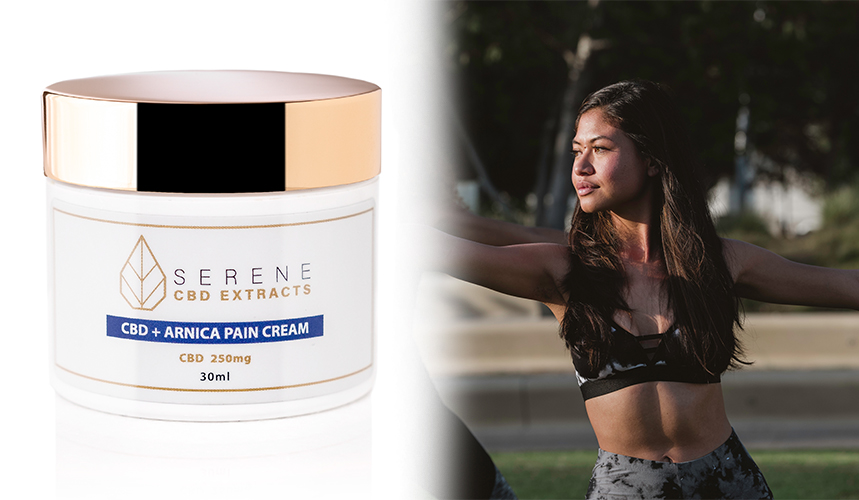
This pain cream is great for the deep pain most of us tend to experience around the shoulders, back and neck. SERENE’s Arnica Pain Cream combines the pain relieving power of CBD with Arnica, MSM and other natural plant derived remedies to quiet the pain signals in your brain, stimulate blood circulation to soothe joint pain and reinvigorate tired and aching muscles. We absolutely love this cream for it’s sweet, minty and slightly piney scent and instantaneous heating sensation on the skin for mild yet fast, effective pain relief. Even better for the neck and shoulders, no greasy residue and a scent that dissipates after application so you can go out confidently without smelling like a ‘pain- relief balm’. We also really appreciate that SERENE leaves out the potentially irritating camphor- so this can be used almost everywhere externally on the body!
Best Cold Therapy: Populum Cold Therapy Rub
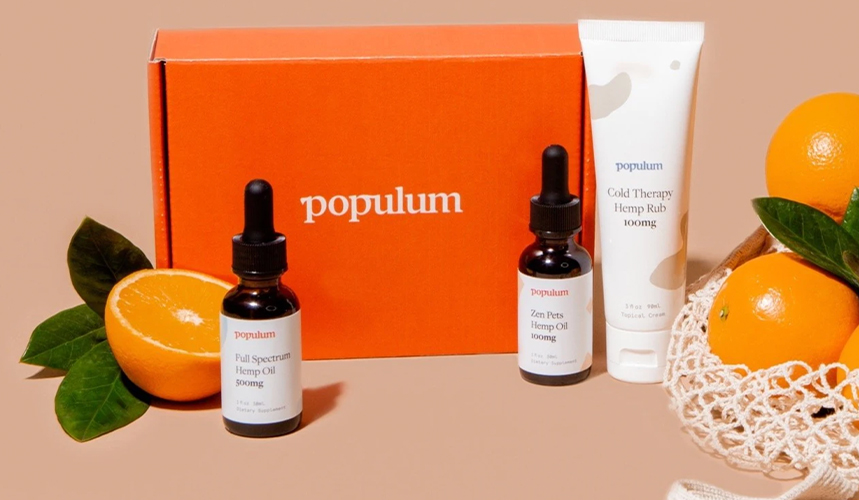
We love Populum for their high quality products and transparent ingredient lists. Their Cold Therapy Hemp Rub is an arctic cold cooling CBD topical cream that helps to soothe and relieve your muscles and joints. This awesome cream is vegan & paraben free, and uses CBD, Arnica, Chamomile, and aloe to offer a quick penetrating chill for your body post workout. But don’t stop there! Populum has an awesome bundle for the full-spectrum athlete available here. Their Advanced Wellness Set includes CBD capsules for on the go, a dropper for more precise dosage, and even includes the Cold Rub mentioned above to soothe your sore muscles and joints.
Best Stiff Joint Relief: Canna Comforts Pain Cream
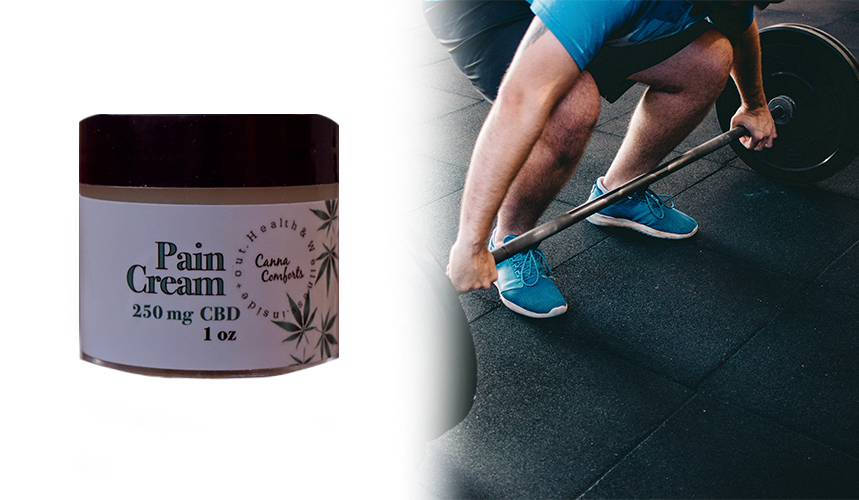
We’ve found that this cream by Canna Comforts is the best for stiff joints and arthritis. It’s a fast acting cream that comes in 3 scents with different terpene profiles to enhance the entourage effect of the transdermal CBD relief! Only the best CBD pain cream! Infused with Terpenes to give an entourage effect. Choose from 3 scents for your use, Blueberry Yum Yum, Paris OG, and tried and true Menthol. Their proprietary all organic herbal blend is infused Extra Virgin Olive Oil, Coconut Oil, Shea butter, Beeswax, and 250 mg of Hemp CBD. Soothe sore joints and healing muscles anytime with this unique terpene focused pain cream.
Best Synergistic Bundle: Spektra Pain Relief Bundle
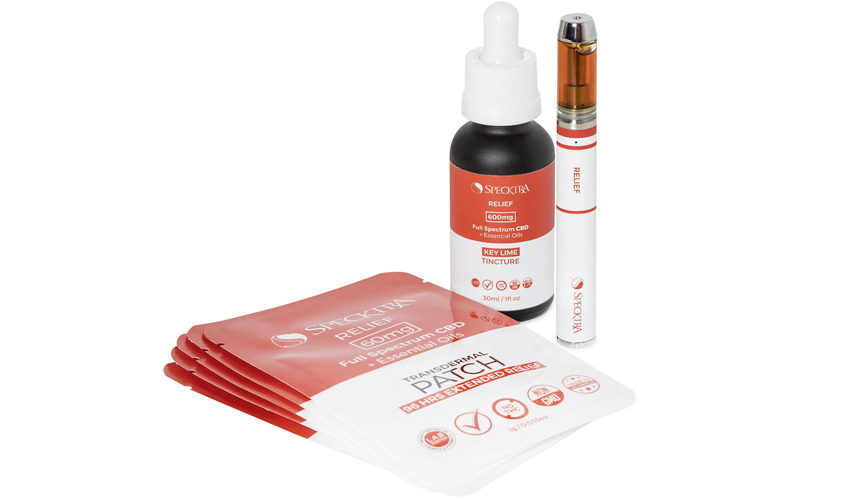
Spektra comes through with tried and true products for CBD consumers providing the best combination to get natural long-lasting relief. The bundle includes a CBD vape for quick and effective direct effects of CBD, an oral tincture for specific and high dosing if you need, and the amazing transdermal Relief CBD patches that can be worn up to 4 days to provide pain relief. Not only that, but all Spektra products are additive-free, pesticide-free, no harmful fillers, formulated with organic essential oils only, and harness the power of full-spectrum phytocannabinoid rich CBD.
